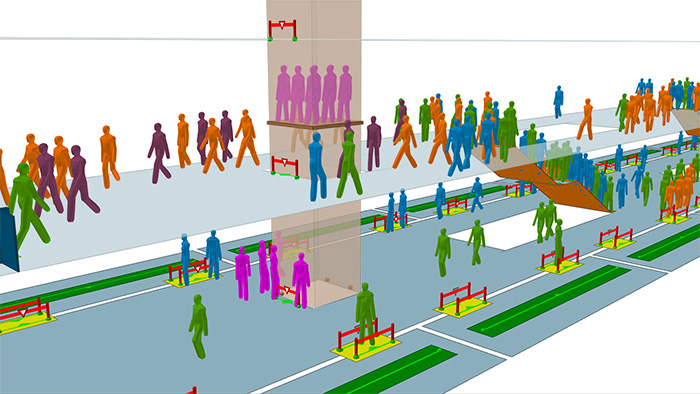Software used in planning of airports, train stations and stadia, and better understanding user experience within other spaces
Pedestrian simulation software Oasys MassMotion has been updated with several new features including new elevator analysis options, conditional wait spaces in process chains and a range of usability enhancements. A Simple Chinese interface and user support has also been released this month.
Initially developed for Arup engineers who needed to understand the impact of crowding on major infrastructure projects, Oasys MassMotion is now used on a variety of projects, from planning designs of major airports, train stations and stadia through to understanding user experience within art galleries, theme parks, and public events.
The software works by associating imported or created geometry as key elements that virtual pedestrians can understand: such as walkable surfaces, doorways, or stairs. The origins, destinations, and any intermediate itineraries of these pedestrians are then set by the user, and the simulation is run. Movement algorithms and network assessments determine the most logical route for agents to move, with dynamic reactions to crowding and emergent conditions. The aim is to reduce the time taken to model different scenarios and allow for alternative building layouts, populations, or operations to be tested rapidly. From understanding evacuation times to helping design construction phasing, MassMotion can be used throughout the design and operation stages of a project.
If you enjoyed this article, subscribe to our email newsletter or print / PDF magazine for FREE






